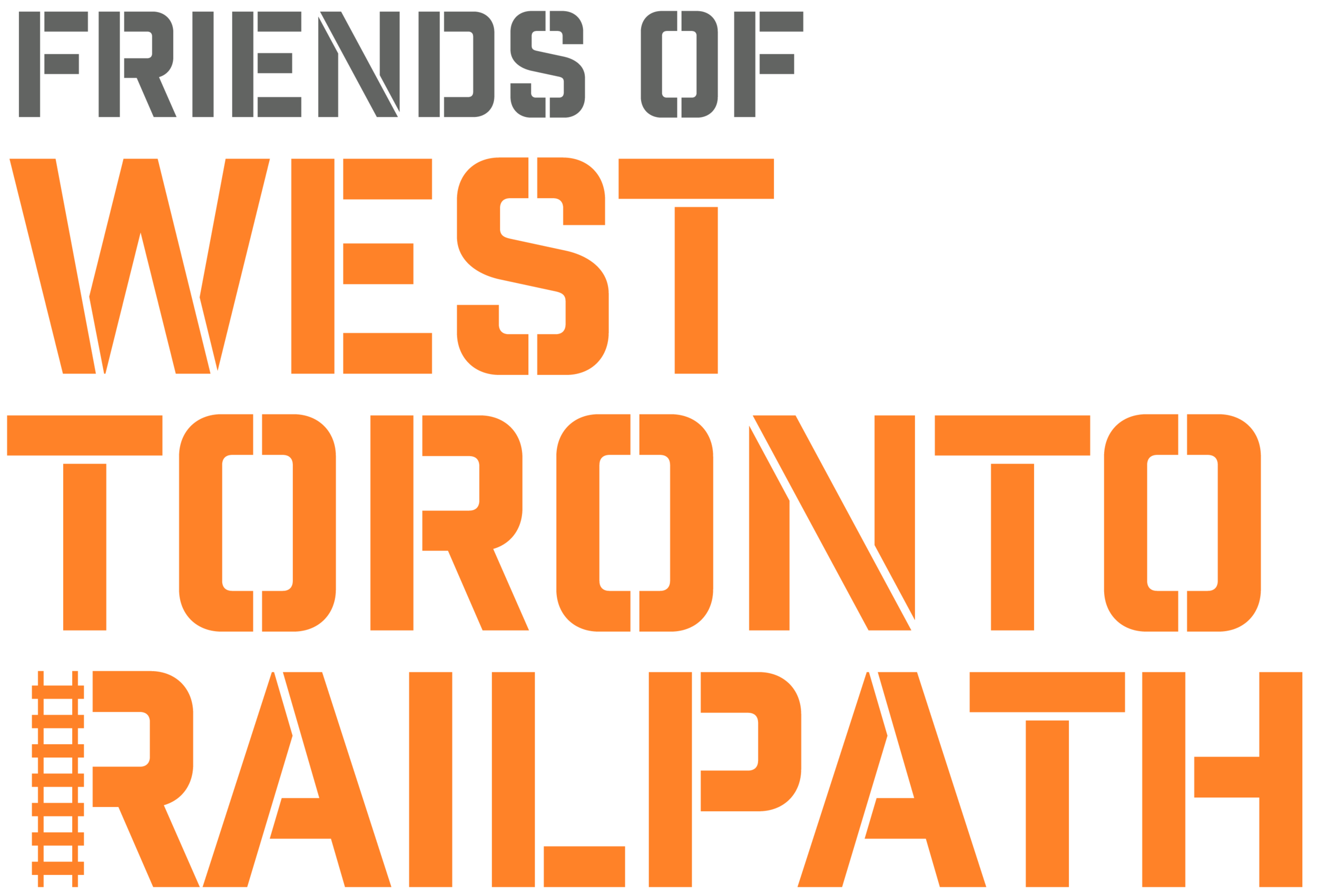The Railpath is home to an ecosystem of plants that are well adapted to harsh urban conditions and which provide food and habitat to birds and insects, and beauty and colour along the path.
Flora of the Railpath
The plants on the West Toronto Railpath were chosen because they are tough and well adapted to harsh urban conditions, native to North America, provide food and habitat to birds and insects, and provide beauty and colour along the path. Many of the plants you see growing today were collected as seed on the overgrown railroad before the WTR was designed (for more on this story, see the History page).
The WTR was originally divided into four distinct planting zones, based on soil conditions and topography. At the north is the Woodland, and going South, there is Mixed Open Grassland and Savannah, Grassland Meadow and Wet Meadow, as the land dips down at the south. Over time, and by design, the plants of the West Toronto Railpath have travelled and mixed. However there are still some distinct areas, for example the large swath of Prairie Cordgrass (Spartina pectinata) at the south of the WTR, which turns golden in the autumn, or the meadow of Smooth Rose (Rosa blanda) that blooms pink in early summer.
The original plant list for the West Toronto Railpath, showing which species were planted from collected seed. Provided by Scott Torrance Landscape Architect Inc.
In amongst the intentionally planted species are many plants known as ruderals. Ruderal species are the first to grow after a disturbance, and are therefore very common in urban environments. They grow and reproduce without being cared for. Some of these beautiful and tough plants that can be seen on the WTR are Staghorn Sumac (Rhus typhina), Queen Anne’s Lace (Daucus carota) and Chicory (Cichorium intybus).
community stewardship tours / ecology walks
Every summer, the Friends of West Toronto Railpath host Community Stewardship Tours along the Railpath. Led by Naturalist Richard Aaron, the popular walks focus on the wild urban plants, both native and ruderal, that thrive on the Railpath. For a list of the many plants currently found on the Railpath, see Richard’s 2018 plant list here. To learn when the next tour is, please follow the Friends on social media: Facebook and Instagram @west_toronto_railpath.
Stewardship
The Friends of West Toronto Railpath act as volunteer stewards: planting, weeding, protecting and improving the ecology of the entire trail.
Although the vegetation on the Railpath looks “wild” it is actually the result of an award-winning design to reclaim industrial land using ecologically beneficial native species. While parts of the Railpath are dominated by ecologically beneficial native species, other parts become overrun with non-native and invasive species. In 2015, the Friends decided to play a more active stewardship role to maintain and promote the original vision of Railpath as native park.
To this end, the Friends of WTR created a Stewardship Plan. It includes our goals, an assessment of the current conditions, plant listings, a native plant restoration plan, and protocols for work by volunteer stewards, City staff, and developers. It also includes a Best Practices Guide prepared by the City of Toronto, for those doing work or holding events on WTR.
We need your help. If you would like to help the Railpath Stewards and get involved in anything we do, please email us:









